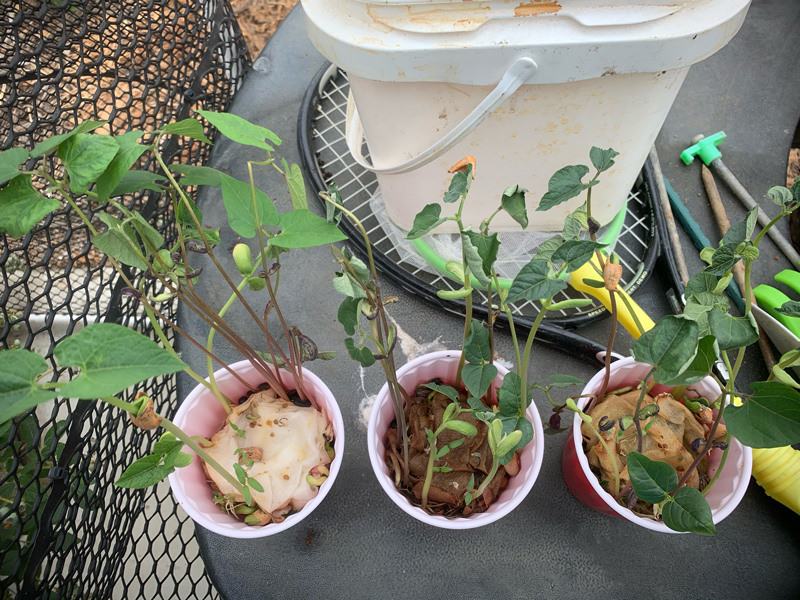Aminopyralid damage in gardens is everywhere, but most people still are blind to the dangers. Amanda wasn’t, so she tested the local manure before adding it to her garden – and it’s a good thing she did!
Amanda writes:
“Thank you for saving my garden. Because of your consistent warnings about aminopyralids, I first tested some horse manure from my local area before hauling yards of it into my garden. One sample (Manure “A”) was from fresh manure and another sample (“Manure “B”) had been aging in a pile for 3-4 years. I put a bunch of beans in 3 separate plastic cups with paper towels and wet them. I germinated them indoors and let then grow for a week. I soaked each manure sample in water for a day then added this water to the experimental bean cups while adding hose water to the control. Within 2 days both Manure A and Manure B seemed to show the typical leafcurled edges characteristic of persistent herbicides while the control did not. We are going to put the manures we already received on our sugarcane and not gather any more additional manure to our site.”
Here are the pictures from her test:




I wasn’t joking when I said “manure can destroy your garden.” It wasn’t an exaggeration. It wasn’t hyperbole.
It is observable fact, based on the experience of many unlucky gardeners. These herbicides were designed to destroy broadleaf “weeds” and to stick around for a long time.
I covered this in my book Compost Everything and I continue to write about it. Don’t put manure in your gardens unless you are 1000% sure it did not come from animals grazed on treated fields or animals that may have been fed hay from treated fields. Manure used to be one of the best and safest amendments. Now it can cause the death of your gardens for multiple years.
Watch your back.
And good work, Amanda. The results are obvious!

